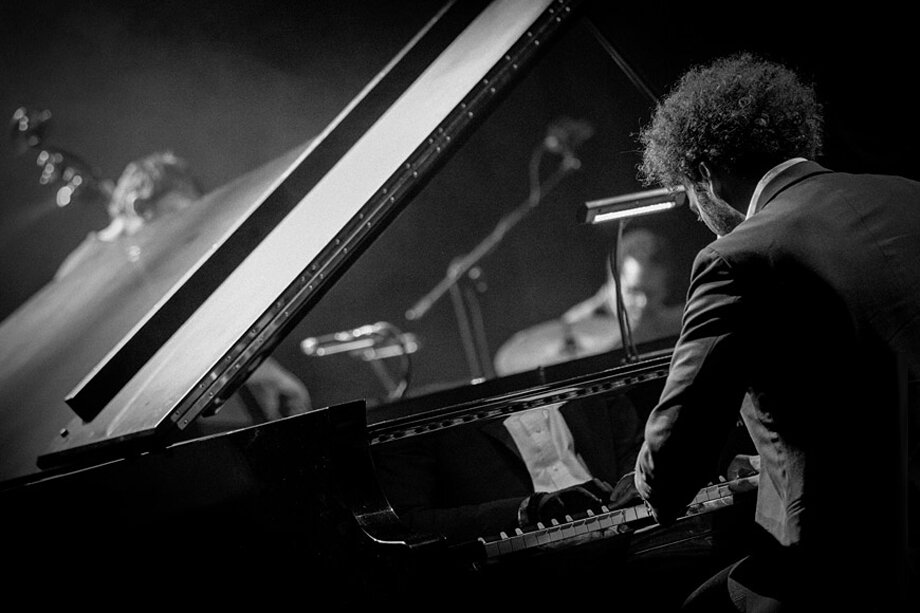The Jazz Gallery Commission 2012-13 Presents David Virelles and Continuum: Take 2
 Back in September, we spoke with David Virelles about the vibrant new music that he composed as part of The Jazz Gallery's Residency Commission Series. Due to unforeseen circumstances, however, David needed to postpone the show to a later date. This Friday and Saturday, December 6th and 7th, exactly three months later, we'll have the pleasure of welcoming David back to our stage with Continuum to give the premiere performances of "Threefold." The Village Voice recently recommended David's performances this weekend as one of the five best jazz shows in NYC in December.For more about the music that will be heard this weekend at the Gallery, here's our reposted conversation with David from a few months back:The Jazz Gallery: Your new piece, “Threefold,” is written for the same group of musicians that you released your album Continuum (Pi) with last year. Is this piece a continuation or a departure from the pieces on your album?
Back in September, we spoke with David Virelles about the vibrant new music that he composed as part of The Jazz Gallery's Residency Commission Series. Due to unforeseen circumstances, however, David needed to postpone the show to a later date. This Friday and Saturday, December 6th and 7th, exactly three months later, we'll have the pleasure of welcoming David back to our stage with Continuum to give the premiere performances of "Threefold." The Village Voice recently recommended David's performances this weekend as one of the five best jazz shows in NYC in December.For more about the music that will be heard this weekend at the Gallery, here's our reposted conversation with David from a few months back:The Jazz Gallery: Your new piece, “Threefold,” is written for the same group of musicians that you released your album Continuum (Pi) with last year. Is this piece a continuation or a departure from the pieces on your album?
David Virelles: Yeah, it’s a continuation. I’m just trying to keep building on something that we started. I used this piece as an opportunity to keep developing the sound of the group because we haven’t had much chance to play! We have done a lot of stuff inspired by Afro-Cuban religions, and so the whole thing kind of spins out of that. It’s not specific to any particular religion, though.It’s not a suite or anything like that—it’s a group of pieces that have the same kind of ideal and goal. I used the opportunity to write some ideas for the group that I haven’t been able to do before.One of the things I tried to explore with these pieces was basically rearranging forms. By form, I mean not only temporal elements, but tonal elements and timbral elements also.
TJG: What do you mean by rearranging forms? How does that process work on the bandstand?
DV: A lot of times we improvise on a fixed structure or we improvise the structure spontaneously. My idea was so that when we play on fixed structures, have them be flexible, have them be modular. By moving these elements around, you can create new forms out of elements that already exist in the composition.To give an example, let’s say you have “ABC,” and that gives you a form to improvise on. Within that form, you have certain parameters, whether it be rhythms, or chord changes or melodies, or any combination of those elements. Usually, every time you get to the end of the form, you go back to the top and repeat the same form. One of the things that I tried with these pieces is that instead of going from left to right: “ABC,” is that you can start on C and then play A, and then play B, and then every time you come around, you can rearrange the order. And it’s up to the players to build these new forms out of the existing material.It’s really nothing new at all. You have it in sampling, for example. Beat-makers sample things from records. They’ll sample a song or a segment of a song and assign it to a button on their drum machine. It could be a long sample or a short sample. If you have multiple samples, you can play them in any order you want, play them forward, backwards, set up the way in which they will loop (or not), but, basically, by triggering those samples you’re setting up a form.So, that idea with this material is related to that beat-making approach, in a way.
TJG: How do you communicate these changes with the other members of the band?
DV: I’m bringing a laptop to the gig, but the laptop isn’t going to be making any sound. The laptop is going to be making what I call the “spontaneous chart.” I have a program that makes chord sequences. I’ll play the first chord and then the computer responds and creates a 16-chord sequence. It does this in real time.Everyone’s different roles are kind of embedded in the composition. For example, in a particular section, I might want the drums to make the decisions and we all respond to that direction. I want to base all these parameters off what the musicians in the group do, as it is not my interest to dictate any particular direction. We can have certain things that have been established previously, but then have the chance to expand on them.
David Virelles and Continuum—Ben Street (bass), Eric McPherson (drums), and Román Díaz (percussion/vocals)—will be performing “Threefold” at The Jazz Gallery this Friday and Saturday, December 6th and 7th. Sets at 9 and 11 p.m., $20 general admission and $10 for members. Purchase tickets here.
